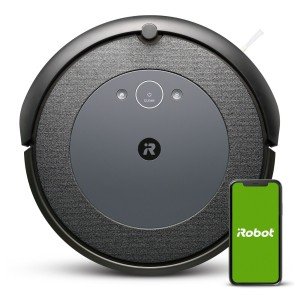Robotic Vacuum Cleaner Commercial: Revolutionizing Home Cleaning
Over the last few years, robotic vacuum have become a groundbreaking innovation in home cleaning technology. With their automated functions and intelligent navigation systems, these gadgets have transformed the method individuals preserve tidiness in their living spaces. This article aims to look into the functionalities, benefits, and future of robotic vacuum, showcasing their function in modern-day homes.
Overview of Robotic Vacuum Cleaners
Robotic vacuum cleaners are self-governing gadgets developed to perform cleaning tasks without requiring manual intervention. Making automatic hoover robot of innovative sensing units, synthetic intelligence, and a host of other innovations, these appliances can navigate throughout a home, getting dirt, dust, and debris from different surfaces while preventing barriers.
Key Features of Robotic Vacuum Cleaners
Robotic vacuum cleaners come geared up with an array of features that boost their functionality:
| Feature | Description |
|---|---|
| Navigation Systems | Employ numerous innovations like laser mapping and cameras to navigate efficiently |
| Automatic Charging | Return to docking stations to recharge when battery levels are low |
| Scheduling | Users can configure cleaning schedules for particular times and days |
| Smart Home Integration | Get in touch with other smart devices for boosted performance |
| Numerous Cleaning Modes | Adapt cleaning styles based on the type of surface area being cleaned up |
| App Control | Permit users to manage settings, get alerts, and start/stop cleaning from another location |
Benefits of Robotic Vacuum Cleaners
- Time-Saving: With robotic vacuums, users can designate their time to other important tasks while the gadget deals with the cleaning. This convenience is a significant selling point for busy families.
- Constant Cleaning: Robotic vacuum cleaners can perform daily cleaning tasks, ensuring that dirt and dust do not build up, resulting in a healthier indoor environment.
- Energy Efficiency: Most robotic vacuums promote energy effectiveness, frequently using less power than traditional vacuum, therefore decreasing electrical energy expenses.
- Smart Technology: With features like real-time mapping, users can keep an eye on the cleaning process. Some advanced models even supply data on cleanings, such as locations covered and the amount of dirt recorded.
- Availability: Robotic vacuums are especially useful for the senior or individuals with movement concerns, streamlining the cleaning process without the need for physical exertion.
Disadvantages of Robotic Vacuum Cleaners
In spite of their many advantages, robotic vacuum cleaners likewise have constraints:
- Limited Suction Power: While they are effective for day-to-day maintenance, they may not be as powerful as traditional vacuums for deep cleaning.
- Barrier Navigation: Some robotic designs might deal with complicated layouts, stairs, or high-pile carpets.
- Battery Life: Most robotic vacuums featured limited battery life, indicating larger homes may need numerous charging cycles to cover all locations.
- Cost: High-quality models can be expensive compared to standard vacuum cleaners.
Choosing the Right Robotic Vacuum Cleaner
With different options offered in the market, picking the right robotic vacuum cleaner can be an overwhelming job. Here are some factors to think about:
- Home Size: Larger homes may need models with longer battery life and bigger dust bins.
- Surface Types: Consider a design that works well on particular surfaces in your home, such as wood, carpet, or tiles.
- Smart Features: Evaluate the level of smart integration if you prefer remote operation and tracking via a smartphone app.
- Brand Reputation: Opt for credible brand names known for trusted products and good client service.
Advised Robotic Vacuum Cleaners
| Brand | Model | Key Features | Price Range |
|---|---|---|---|
| iRobot | Roomba s9+ | Advanced mapping, powerful suction | ₤ 949-₤ 1,099 |
| Roborock | Roborock S7 | Sonic mopping, customizable cleaning courses | ₤ 649-₤ 749 |
| Eufy | RoboVac 30C | Affordable, strong suction, app control | ₤ 250-₤ 300 |
| Neato | D7 Connected | Distinct D-shape design, zone cleaning software application | ₤ 599-₤ 700 |
| Shark | IQ Robot | Self-emptying base, smart mapping | ₤ 599-₤ 699 |
Future of Robotic Vacuum Cleaners
As technology advances, the future of robotic vacuum looks promising. The combination of AI and machine learning systems is expected to boost navigation capabilities. Emerging patterns include:
- Enhanced Interaction: Future designs may feature integrated voice assistants, enabling users to release cleaning commands through voice.
- Enhanced Sensors: Enhanced sensors might lead to better challenge acknowledgment, enabling the vacuum to work more effectively in cluttered spaces.
- Multi-Functionality: Future robotic vacuums may deal with additional chores, such as mopping or window cleaning, consolidating several cleaning jobs into one gadget.
FAQs About Robotic Vacuum Cleaners
1. How much do robotic vacuum cleaners usually cost?
The price can vary extensively, varying from ₤ 200 to over ₤ 1,000, depending upon functions and brand.
2. Can robotic vacuum cleaners clean carpets efficiently?
Yes, lots of modern robotic vacuum cleaners are developed with powerful suction systems that can clean up numerous carpet types.
3. Do robotic vacuum cleaners need much upkeep?
Maintenance is reasonably low; however, users must routinely clean the filters, empty dust bins, and sometimes examine the brushes for obstructions.
4. For how long does automatic vacuum on a single charge?
The majority of robotic vacuums can run for about 60 to 120 minutes, depending upon the model and cleaning conditions.
5. Can I arrange my robotic vacuum to clean when I'm not home?
Yes, most robotic vacuum include scheduling functions that enable users to set particular times for cleaning.
Robotic vacuum cleaners are not simply gizmos; they represent a significant evolution in home cleaning innovation. By making cleaning jobs easier and more efficient, they enable users to take pleasure in a cleaner living environment with minimal effort. As innovation advances, it is most likely that these devices will become much more sophisticated, leading the way for a smarter, clutter-free future.

